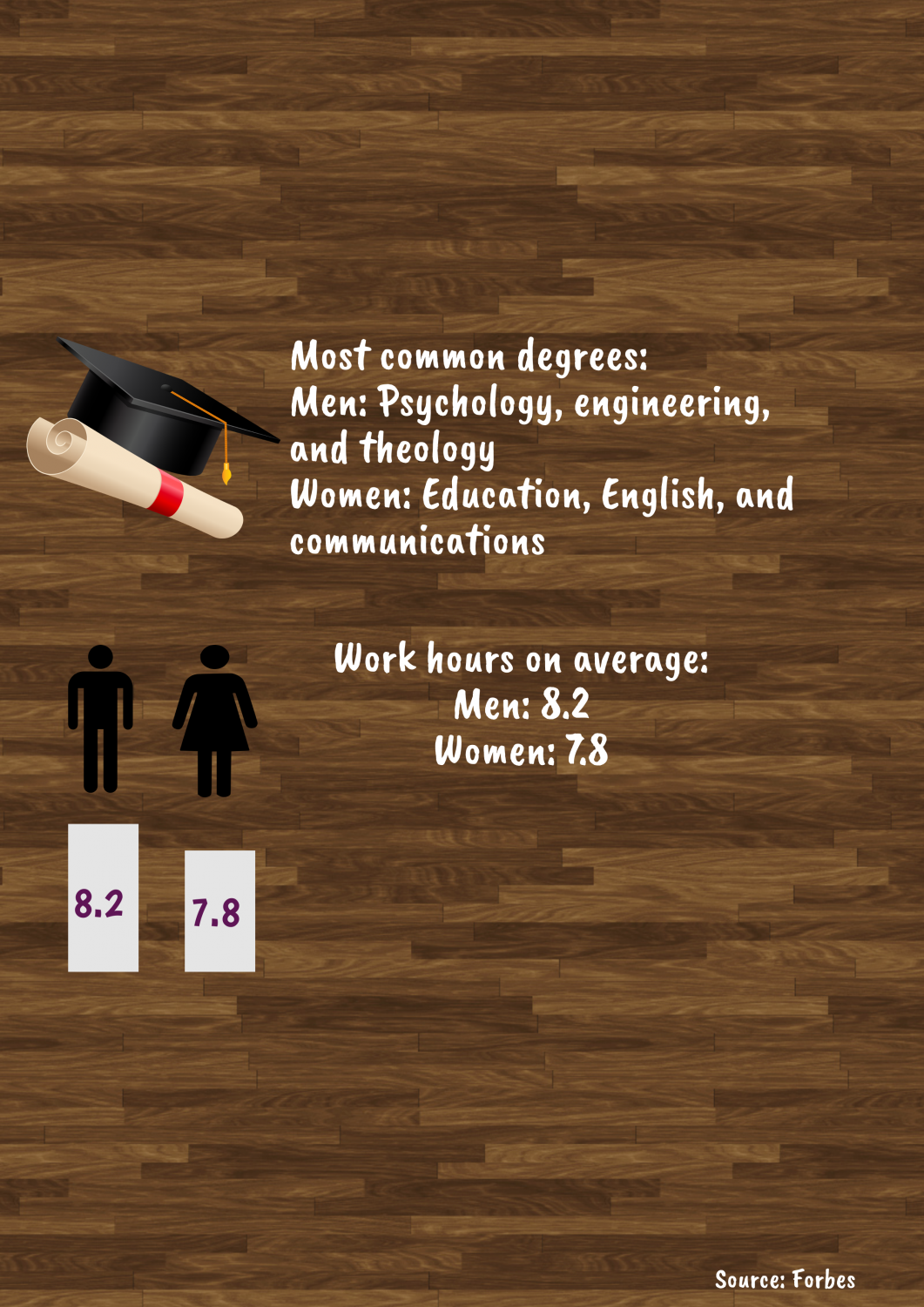Wage gap: the myth
WSS intern Gary Chen unfolds the myth commonly known as the wage gap with facts and evidence
May 22, 2019
Imagine being a woman in one of the best countries in terms of equality in the world, but you still apparently make less than your male counterparts. With a victim mentality, this is a lie that many believe. Countless evidence disproves this, so it is only fair that people shouldn’t believe this lie, but many do. Today, we find out why.
First off, the differences in the working hours and professions of men and women make this difficult to compare, as on average, men work more hours and choose higher paying professions, already explaining a part of this lie. However, even with equal hours and education, there is still evidence disproving the wage gap.
In 2018, Google conducted research on whether or not it underpaid its female employees. The results shocked many at Google, as single women actually made $9.7 million more than their single male counterparts. According to Forbes, a “victim mentality” also perpetuates false fears of gender inequality. Karin Agness, a Forbes reporter went to speak at Harvard to undergraduate women. She asked a simple question. “Do you think you make $0.78 for every $1 a man makes?” The astounding majority of the crowd raised their hands.
Many women’s rights organizations continue to spread this mentality of being set up to fail. On the Institute for Women’s Policy Research wage gap page, there is literally a pull quote telling women they will not be equal to men until 2119. If one thing’s for sure, being forced to think you will fail certainly won’t help you in life.
The Bureau of Labor Department statistics says that women make 77% of what men earn. Their statistics are based on the same jobs for men and women. However, they did not account for the factors stated earlier, such as how men tend to choose higher paying professions and work more hours. If women are working 77% of the hours earning 77% of the pay, that is only fair.
There has been considerable human error in the calculation of the supposed wage gap. Survey data and administrative records uncover the underreporting of income within some of the most widely used survey data.
Another factor is flexibility in job schedule. Heritage News analyzes how one of the most valued qualities in a job that mothers want is flexibility. However, this is a trait that companies don’t like. In essence, it’s a value of choice. Many female workers are willing to sacrifice pay in terms of flexibility.
Feminists claim that once they become mothers, they earn less than fathers, hence what they call the “fatherhood bonus” and “motherhood penalty.” Fresh evidence from a Harvard study finds this false. On average, mothers took 17.5 unpaid days of leave, often to avoid undesirable schedules. Fathers, on the other hand, took 10 days on average. According to a Wharton study, Fathers also worked 160 hours of overtime with mothers trailing behind at 80 hours.
In conclusion, we can see the explanation the wage gap lacks. Evidence such as case studies, a victim mentality, and in consideration of choice differentiation all point to one conclusion. The wage gap is not suppressing women, it is not a gaping threat, but merely a deception.
